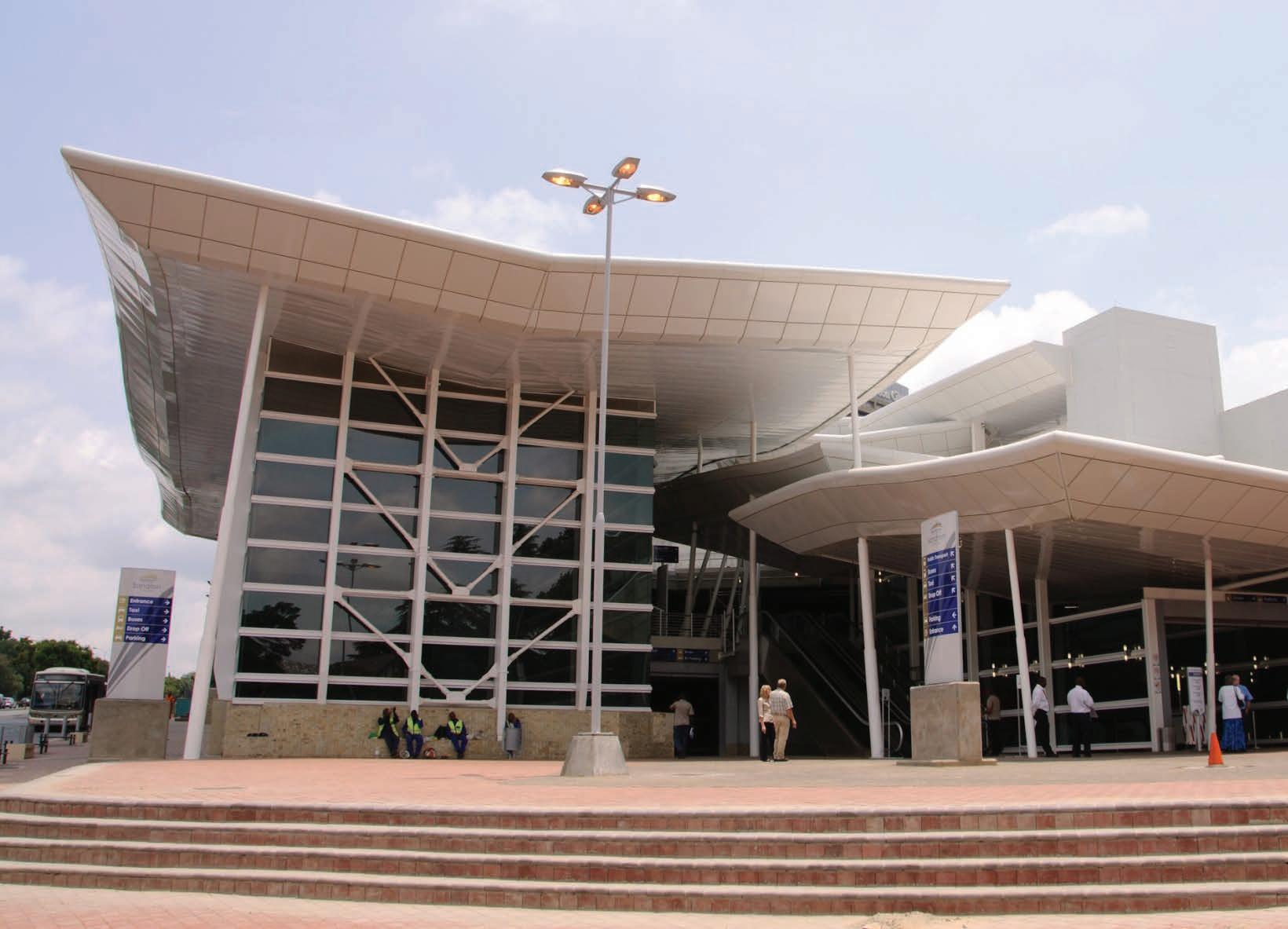
3 minute read
The future: Connecting more people and places
The Gauteng Rapid Rail Integrated Network (GRRIN) is being expanded to create an efficient and sustainable transport service for Gauteng.
The Gauteng Integrated transport Master Plan (ITMP 25) recommended that rail should form the backbone of public transport in Gauteng. the plan also recommended that the rail network be extended to connect the people of Gauteng and create a sustainable transport service for the province.
Advertisement
As mandated by the then Gauteng MeC for roads and Public transport, Dr Ismail Vadi, the Gautrain Management Agency (GMA) completed a feasibility study for the rail extensions. this study has been submitted to the provincial and national treasuries, as well as to major stakeholders that were consulted during the feasibility process of the proposed GRRIN expansion implementation scenarios. the feasibility study identified various links and stations. timelines are dependent on factors like economic growth, population growth and transport demand. the proposed GRRIN extensions will span over various areas and will be developed in multi phases over an extended period. the feasibility study also identified a total of 149km of rail and 19 stations for the final route. the proposed links and stations are: ¡ A link between Marlboro and Soweto, with an additional station at Sandton as well as new stations at Randburg, Cosmo City, Little falls, Roodepoort and Jabulani; a link between Jabulani and Mamelodi through Cosmo City, with new stations at Fourways, Sunninghill, Olievenhoutbosch, Irene, Tshwane east, Hazeldene and Mamelodi; a link between Rhodesfield and Boksburg, with new stations at the East Rand Mall and Boksburg; a link between Cosmo City and Lanseria Airport, with new stations at Cradle and Lanseria.
As part of the project, preparatory work on all the proposed routes will be subjected to the route Determination Process, as prescribed by the Gauteng transport Infrastructure Amendment Act, 2003. this process includes public participation at the appropriate time. In this regard, detailed information will be made available through the GMA website, the media and government gazettes. the feasibility study also outlined various benefits, including significant economic benefits through job creation and investment. It is estimated that Phase 1 of the GRRIN extension (Marlboro to Little falls through Sandton, Randburg, Cosmo City) will create close to 29 000 jobs during construction and an additional 7729 long-term jobs during the start of operations. Phase 1 is also expected to see about R388 million invested into skills development during the construction phase, and a further R29m during the operational phase.
A major benefit of the GRRIN expansion will be the provision of an upgraded, integrated transport network. this, in turn, will help build a fully integrated city region by linking existing road-based public transport with the rail system. By connecting several townships to the centre of Gauteng and the wider regions, the GRRIN expansion will also provide the people of Gauteng with greater access and connection to economic opportunities.

Compared to road transport, rail provides lower carbon transport solutions. the GRRIN extensions will therefore promote a greener Gauteng by providing a top quality public transport system that will help reduce road-based transport, thus reducing traffic congestion and carbon emissions.
Demand modelling was also done to determine what Gauteng’s transport needs will be in 2025 and 2037. through this modelling process, it became clear that the “cost of doing nothing” in Gauteng will be major road congestion in 2037. At this stage, due to an estimated doubling of car growth, vehicles will only be able to crawl along at an average of 15 kilometres per hour. expected to attract both local and international private sector funding, the GRRIN expansion will unlock opportunities for innovation and world bestpractise during design, construction, operations and maintenance.




